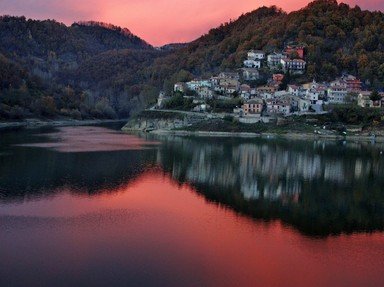Quiz Answer Key and Fun Facts
1. "Stopping by Woods on a Snowy Evening" is one of Robert Frost's most enduringly popular poems. In which northeastern US state, known for its beautiful woodlands and a delicious, sweet product, was Frost living when he penned the poem?
2. What British rock band, named after a real person, released the folk-influenced album "Songs from the Wood" in 1977?
3. A remnant of a much larger wood, the Bois de Boulogne in Paris has been depicted by many famous artists. Which Post-Impressionist artist, known for his idiosyncratic paintings of exotic jungles, created the work in the photo?
4. Woodlands and forests abound in the works of J.R.R. Tolkien. One of the largest and most threatening is named Mirkwood, which translates the Elvish name "Taur-nu-Fuin". What does the English word "mirk" mean?
5. Home to a herd of free-roaming wood bison, the enormous Wood Buffalo National Park is located on the border between the Northwest Territories and which western Canadian province, known for dinosaurs and its gas and oil industry?
6. One of the most famous waltzes composed by Johann Strauss II celebrates the woods found on the outskirts of which beautiful Central European capital?
7. The wild man of the woods is a recurring motif in the art and literature of the European Middle Ages. What half-human, half-animal creatures, often associated with the god Dionysus, are believed to be the Greek ancestors of this figure?
8. The name of the western capercaillie, one of the heaviest birds found in Europe, means "horse of the woods" in Scottish Gaelic. Also known as wood grouse, is it related to chickens and turkeys?
9. The 1987 musical "Into the Woods" is based on a number of well-known fairy tales. Which of these tales is NOT referenced in the musical?
10. Hen-of-the-woods is one of the common names of the mushroom Grifola frondosa. Which of these facts about this fungus is NOT true?
Source: Author
LadyNym
This quiz was reviewed by FunTrivia editor
agony before going online.
Any errors found in FunTrivia content are routinely corrected through our feedback system.

